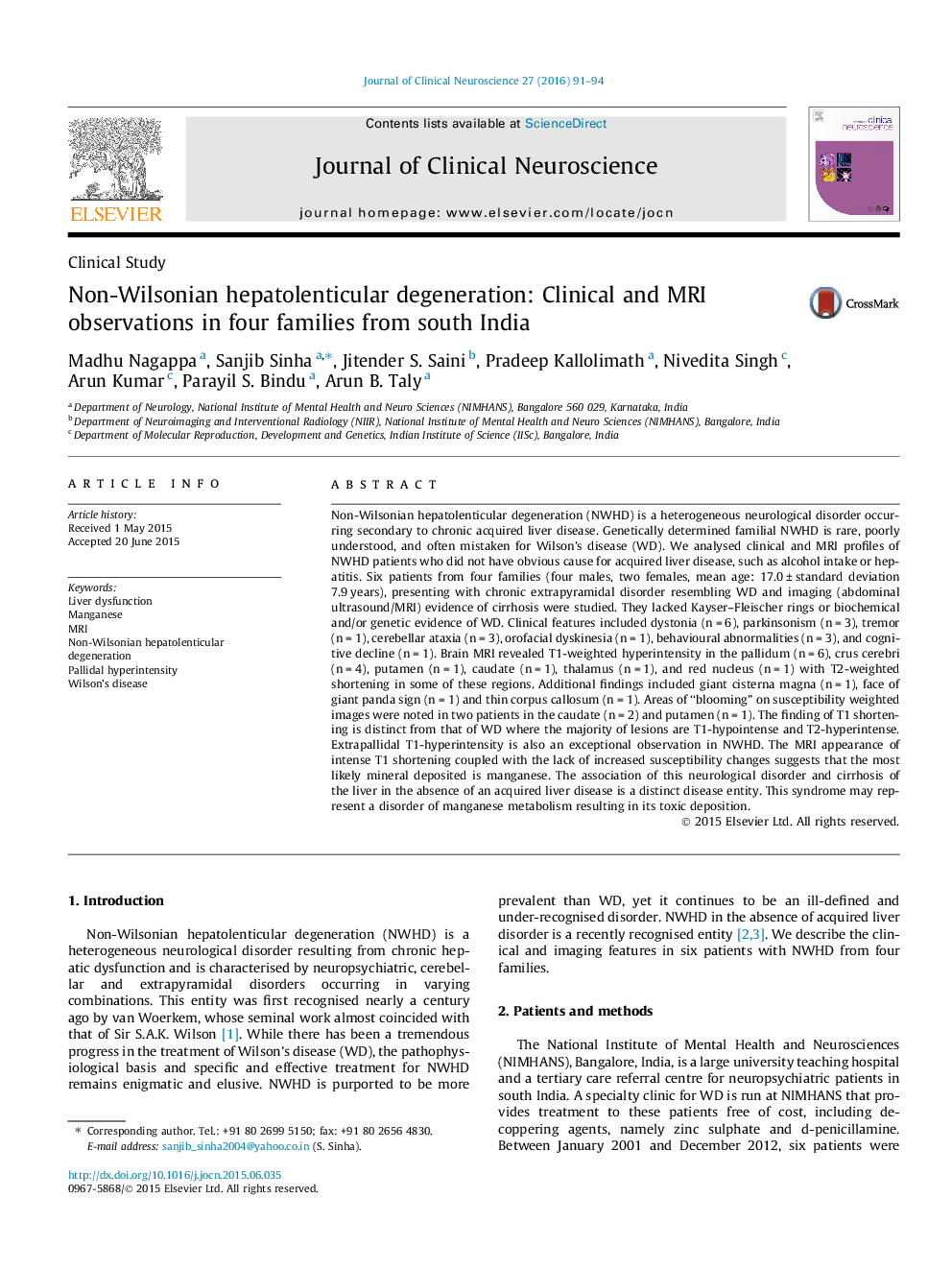| کد مقاله | کد نشریه | سال انتشار | مقاله انگلیسی | نسخه تمام متن |
|---|---|---|---|---|
| 3058243 | 1580289 | 2016 | 4 صفحه PDF | دانلود رایگان |
• Clinical and MRI profile in 6 patients with non-hepatolenticular degeneration was studied.
• Patients had involuntary movements, ataxia, neuro-psychiatric manifestations.
• MRI commonly showed T1 hyperintensity of pallidum (6) and crus cerebri (4).
• Areas of ‘blooming’ were noted in two patients: caudate (2), and putamen (1).
• Neurological illness and liver cirrhosis without acquired liver disease is a distinct entity.
Non-Wilsonian hepatolenticular degeneration (NWHD) is a heterogeneous neurological disorder occurring secondary to chronic acquired liver disease. Genetically determined familial NWHD is rare, poorly understood, and often mistaken for Wilson’s disease (WD). We analysed clinical and MRI profiles of NWHD patients who did not have obvious cause for acquired liver disease, such as alcohol intake or hepatitis. Six patients from four families (four males, two females, mean age: 17.0 ± standard deviation 7.9 years), presenting with chronic extrapyramidal disorder resembling WD and imaging (abdominal ultrasound/MRI) evidence of cirrhosis were studied. They lacked Kayser–Fleischer rings or biochemical and/or genetic evidence of WD. Clinical features included dystonia (n = 6), parkinsonism (n = 3), tremor (n = 1), cerebellar ataxia (n = 3), orofacial dyskinesia (n = 1), behavioural abnormalities (n = 3), and cognitive decline (n = 1). Brain MRI revealed T1-weighted hyperintensity in the pallidum (n = 6), crus cerebri (n = 4), putamen (n = 1), caudate (n = 1), thalamus (n = 1), and red nucleus (n = 1) with T2-weighted shortening in some of these regions. Additional findings included giant cisterna magna (n = 1), face of giant panda sign (n = 1) and thin corpus callosum (n = 1). Areas of “blooming” on susceptibility weighted images were noted in two patients in the caudate (n = 2) and putamen (n = 1). The finding of T1 shortening is distinct from that of WD where the majority of lesions are T1-hypointense and T2-hyperintense. Extrapallidal T1-hyperintensity is also an exceptional observation in NWHD. The MRI appearance of intense T1 shortening coupled with the lack of increased susceptibility changes suggests that the most likely mineral deposited is manganese. The association of this neurological disorder and cirrhosis of the liver in the absence of an acquired liver disease is a distinct disease entity. This syndrome may represent a disorder of manganese metabolism resulting in its toxic deposition.
Journal: Journal of Clinical Neuroscience - Volume 27, May 2016, Pages 91–94
